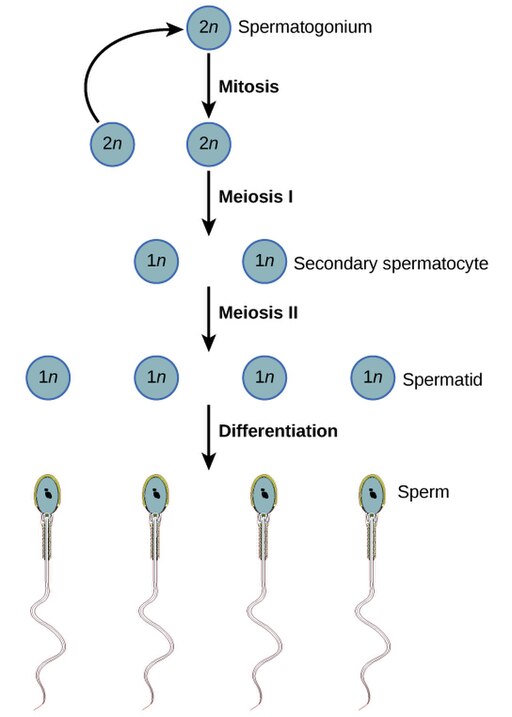Maturation of gametes and organism life cycle
The general steps of meiosis and mitosis are similar from cell to cell and organism to organism. But the specifics can vary: Although meiosis involves two cell divisions and ends with four haploid cells, the fate of those cells can be quite different from species to species, and even among sexes.
In gonadal male animals, the meiocytes are called primary spermatocytes. The products of meiosis I are called secondary spermatocytes, and the four products of meiosis II are called spermatids. The spermatids mature, growing tails and becoming functional sperm cells.
In female animals, the meiocytes are called primary oocytes. The primary oocytes begin meiosis I in the ovaries before birth, but they arrest in prophase I. After puberty, meiosis continues, but the products of meiosis I are not equal. To maximize the nutrients destined for the eventual egg cell, the primary oocyte divides asymmetrically into a secondary oocyte and a small, nonviable cell called a polar body. The polar body gets half of the chromosomes, but not much else: The much-larger secondary oocyte gets almost all the cell resources, including most organelles of the cell. The secondary oocyte arrests in metaphase II until after ovulation – and even until after fertilization! If the oocyte is fertilized, this triggers the completion of meiosis II. A second polar body is formed, with the fertilized egg again keeping most of the cellular resources. In this manner, even though there are two meiotic divisions, only one functional gamete is produced from meiosis in gonadal females. (Figure 13)

In other species, there are further differences. For example, in plants haploid gametophytes undergo additional rounds of the mitotic cell cycle before they mature into pollen grains, which are the male reproductive cells. And in fungi, the organism spends much of its life cycle haploid, only forming a transient diploid cell for reproduction.

